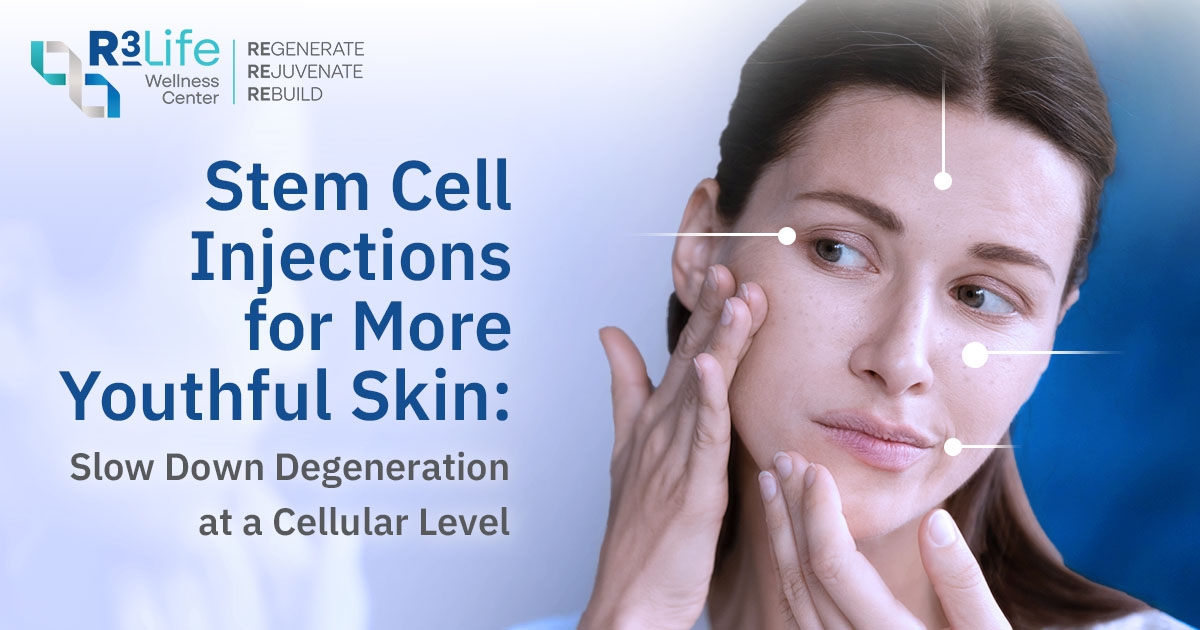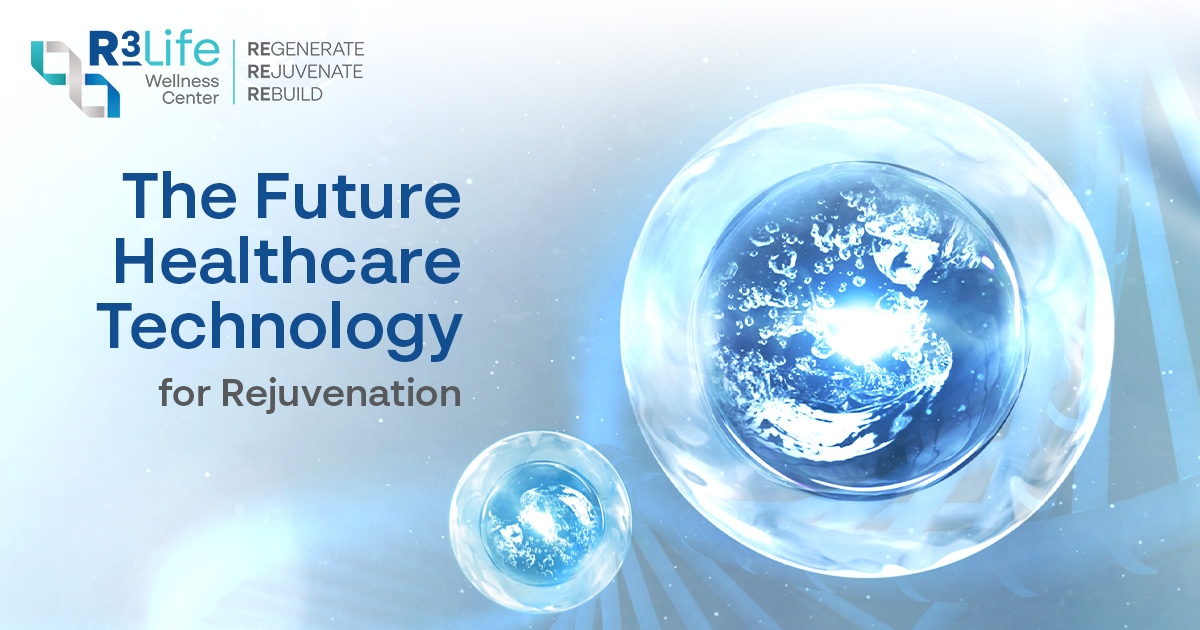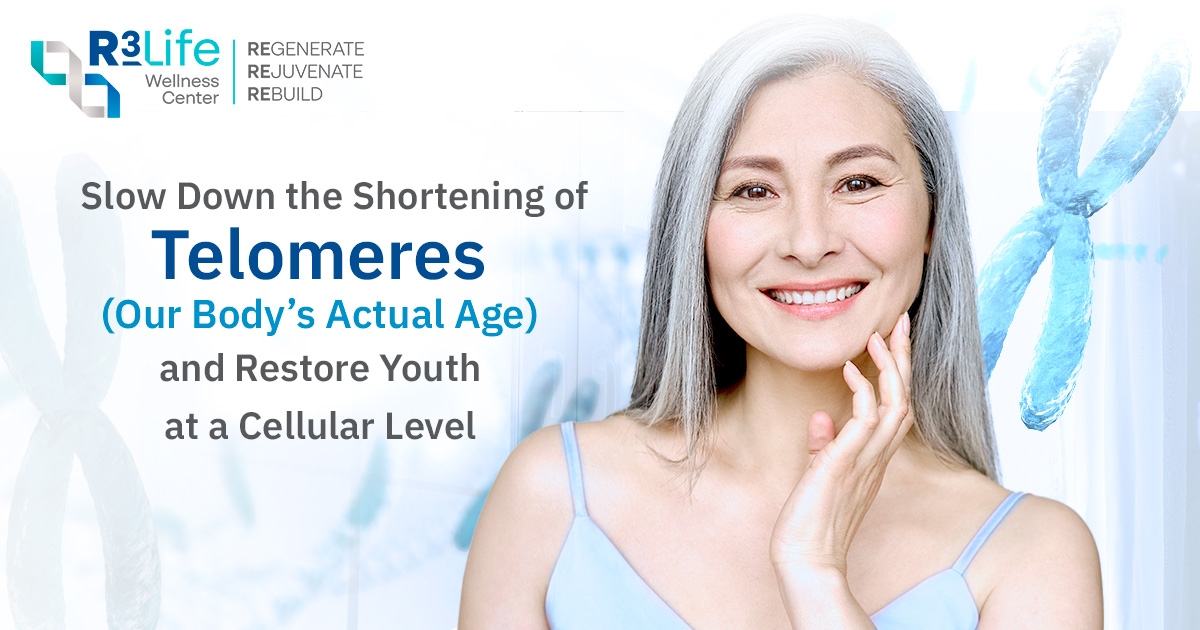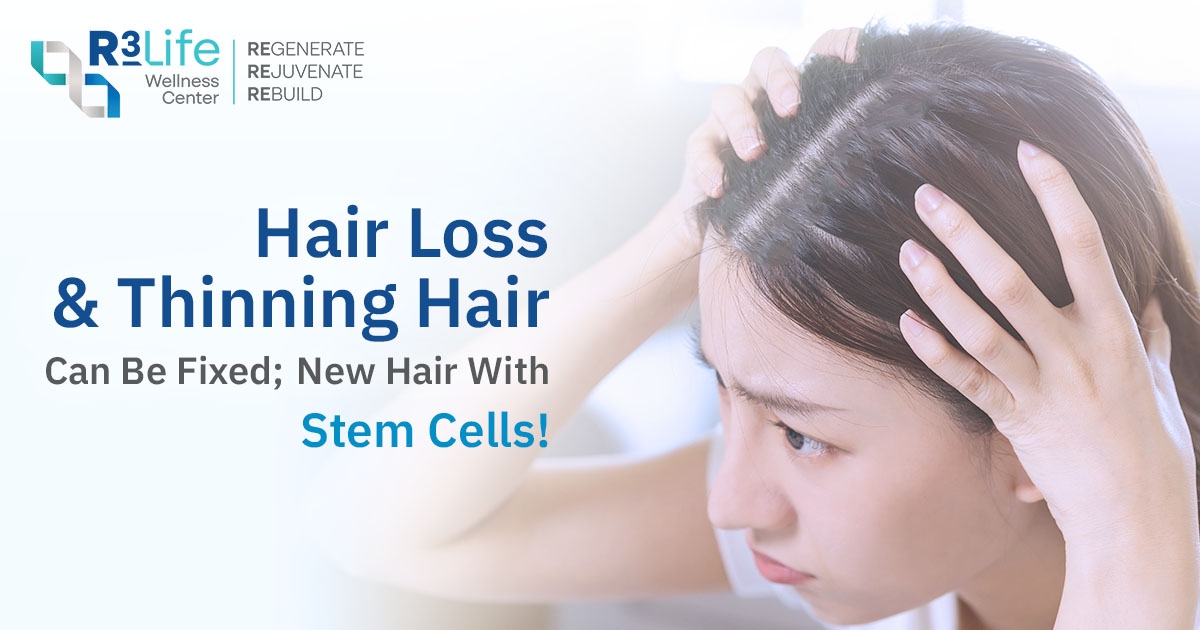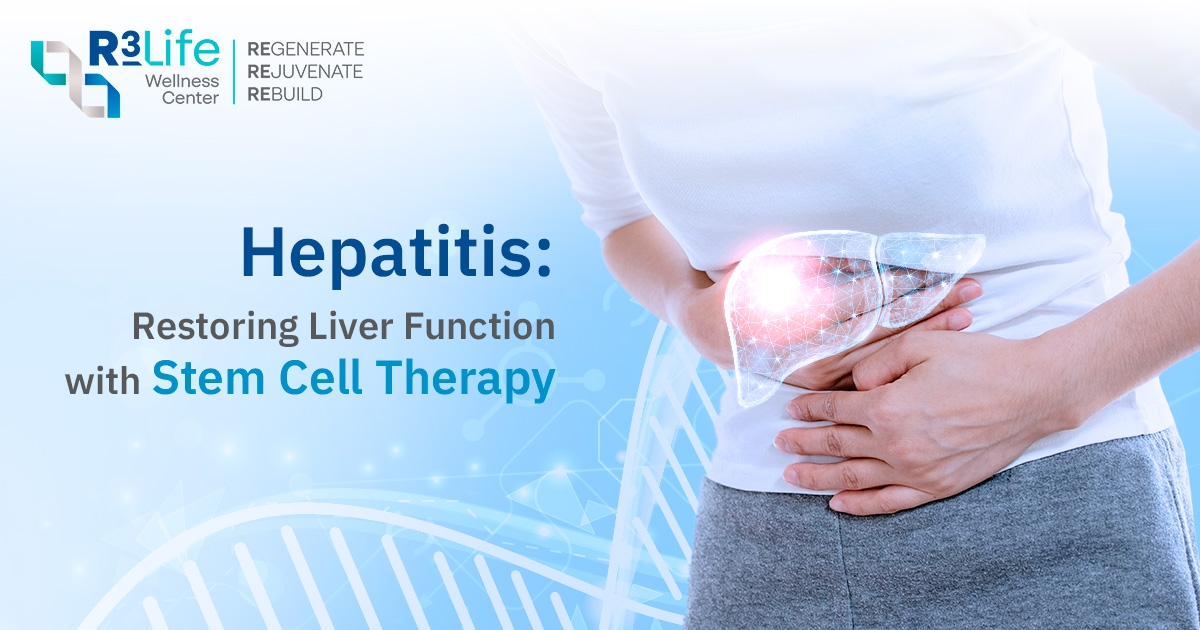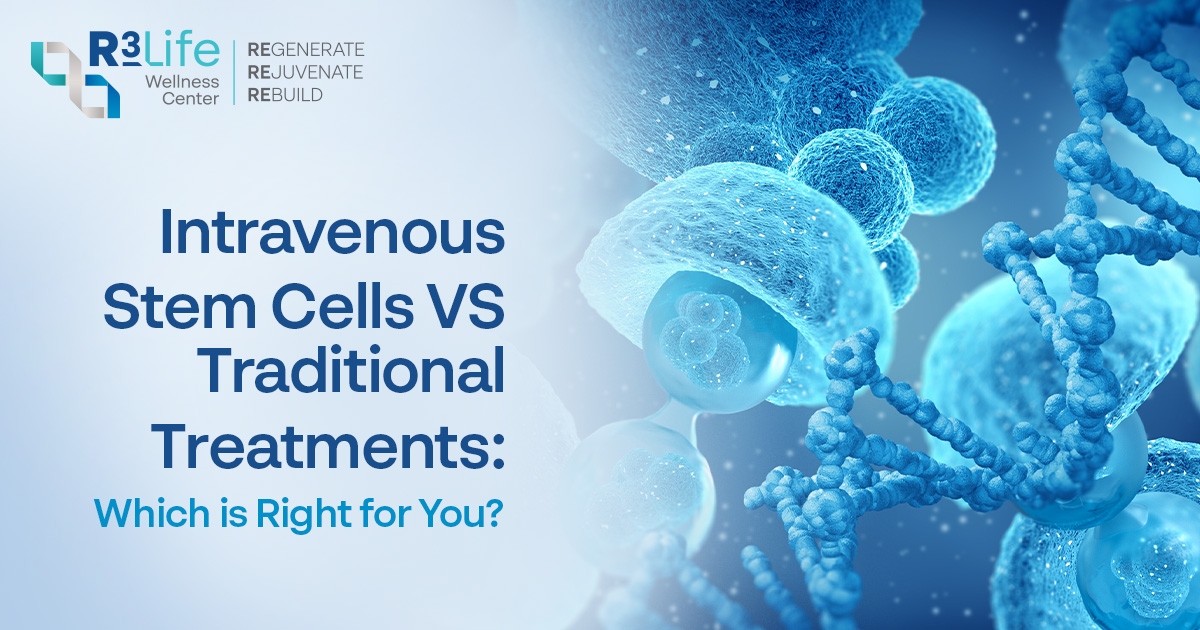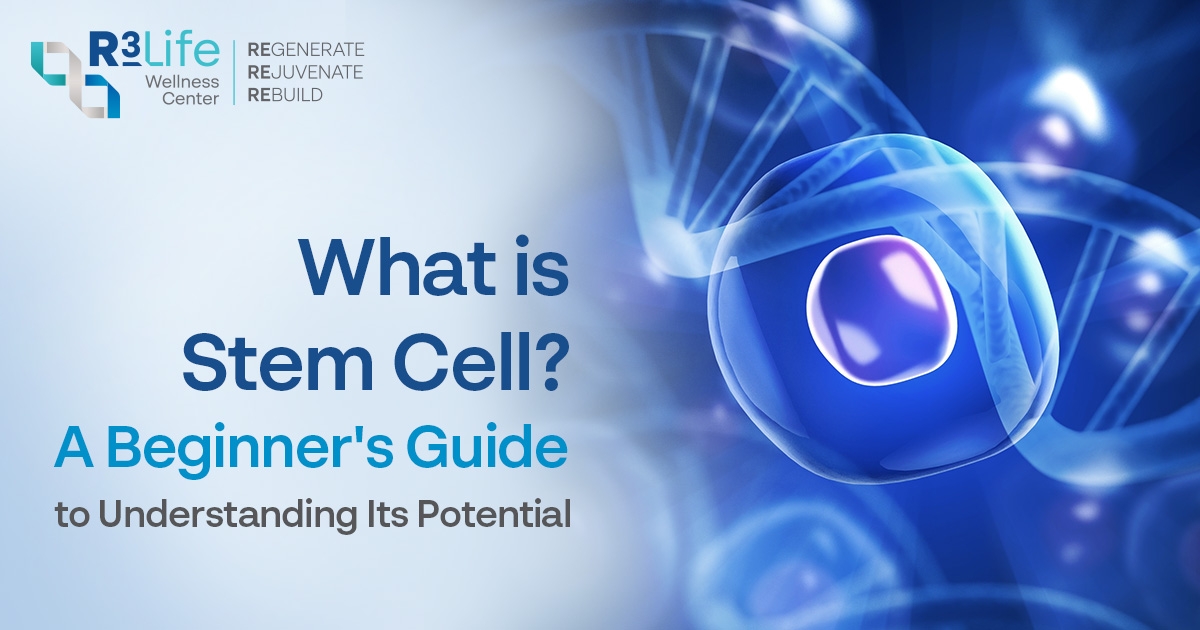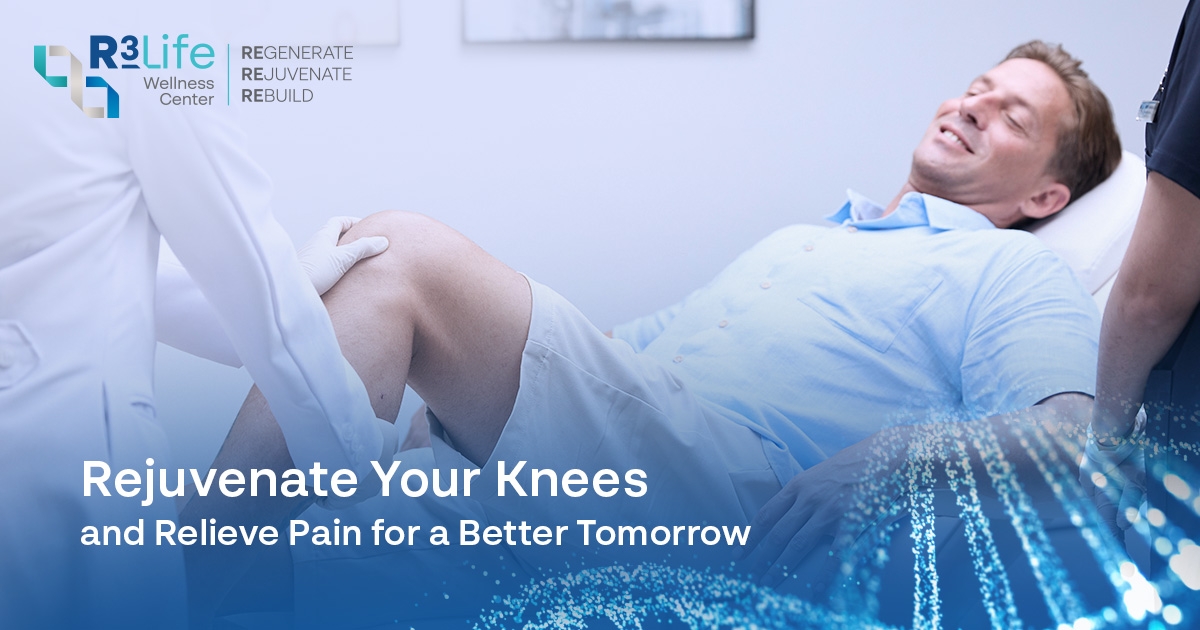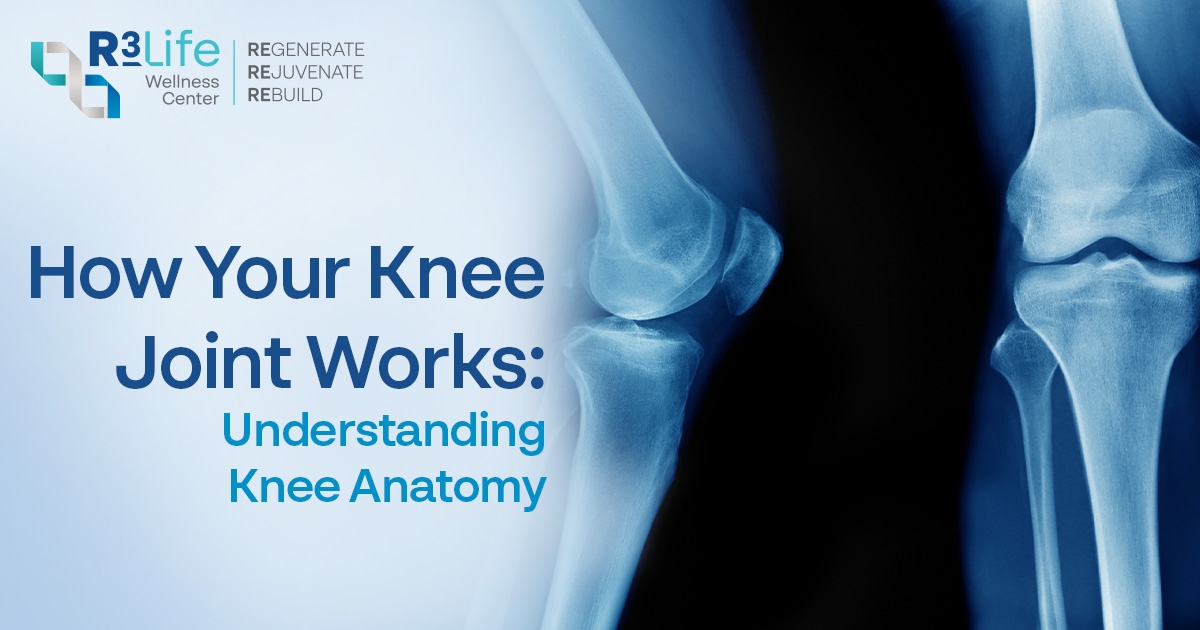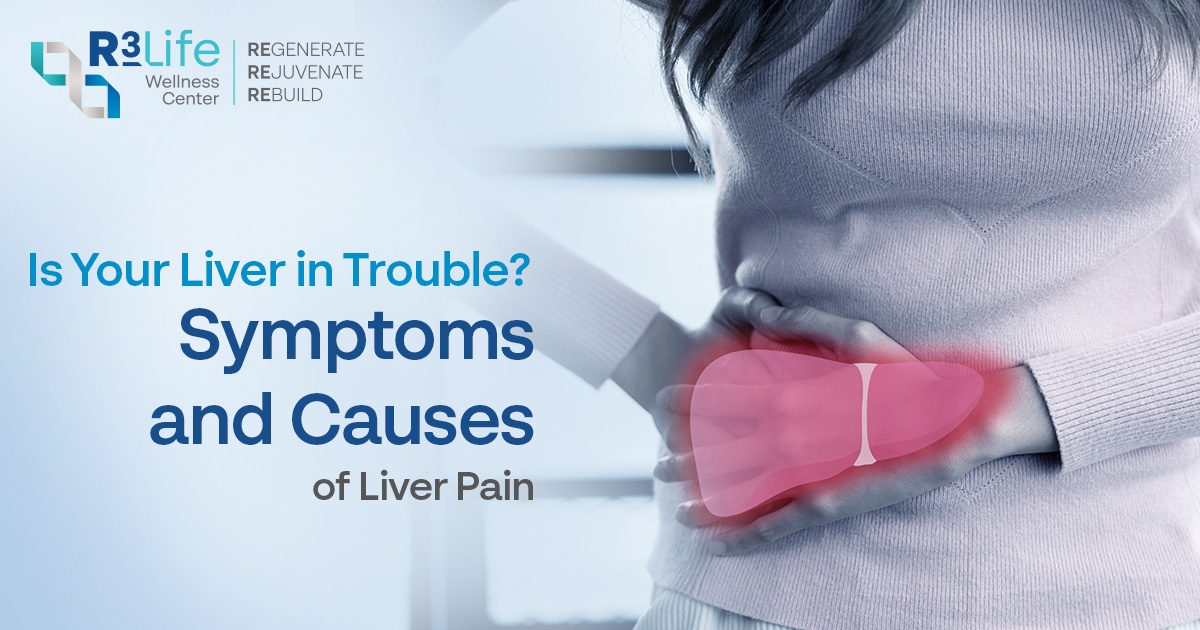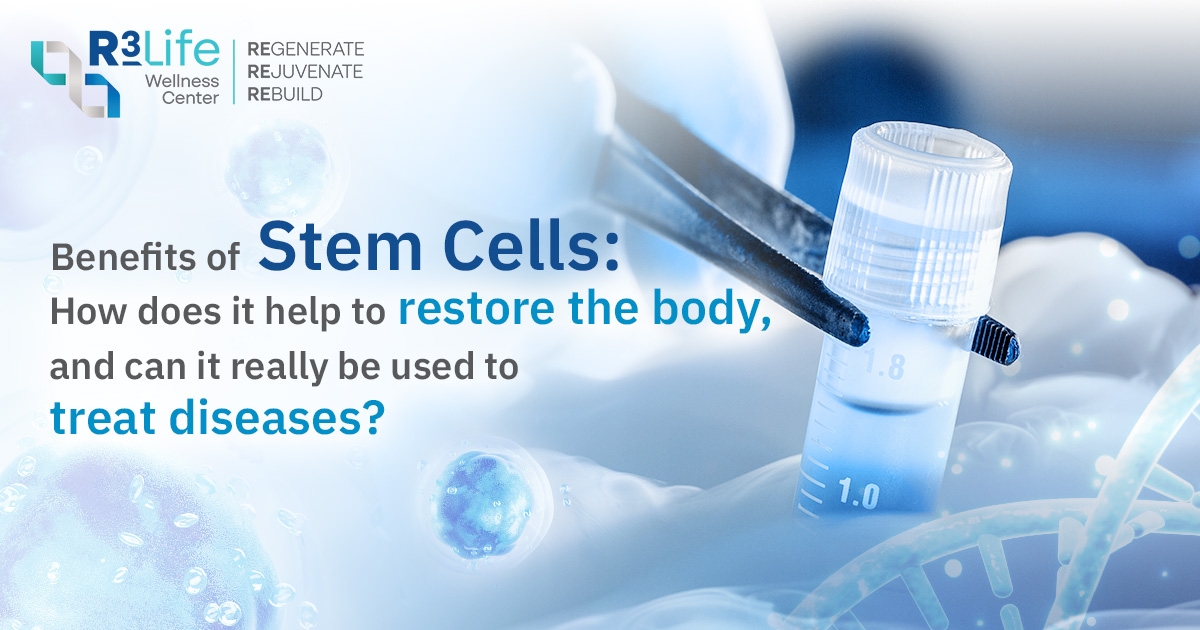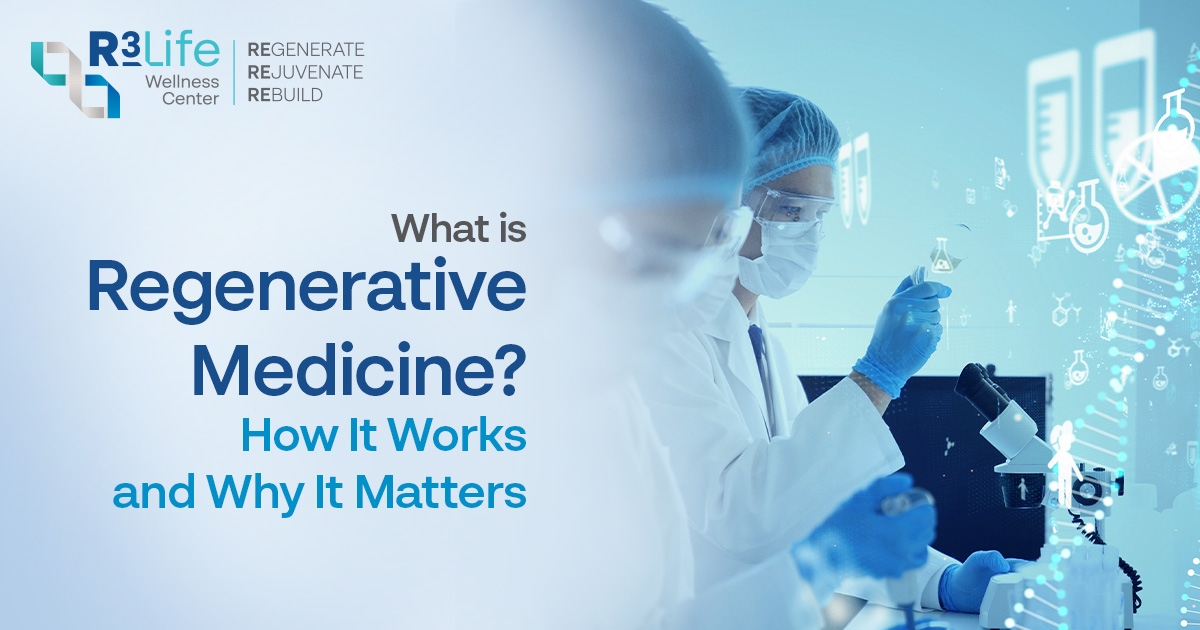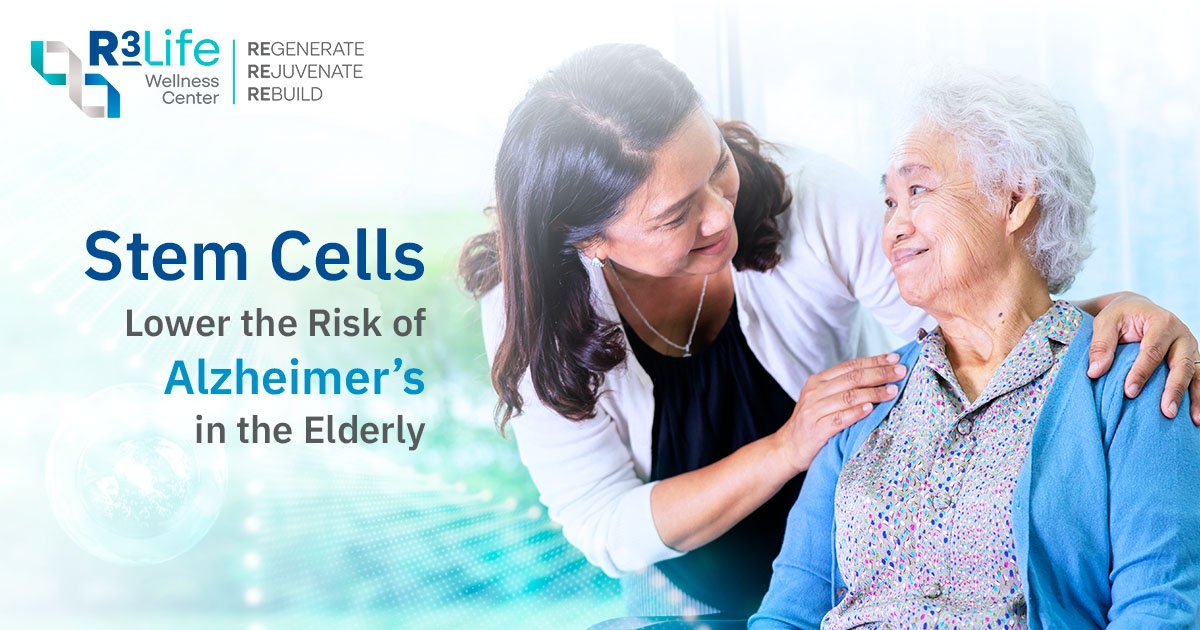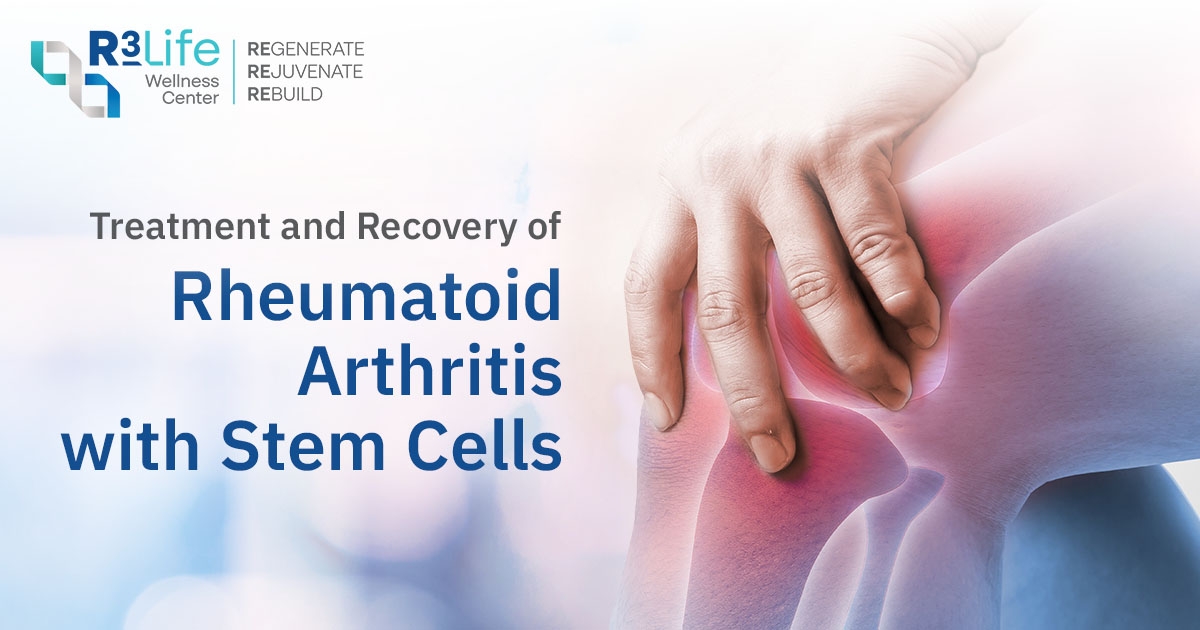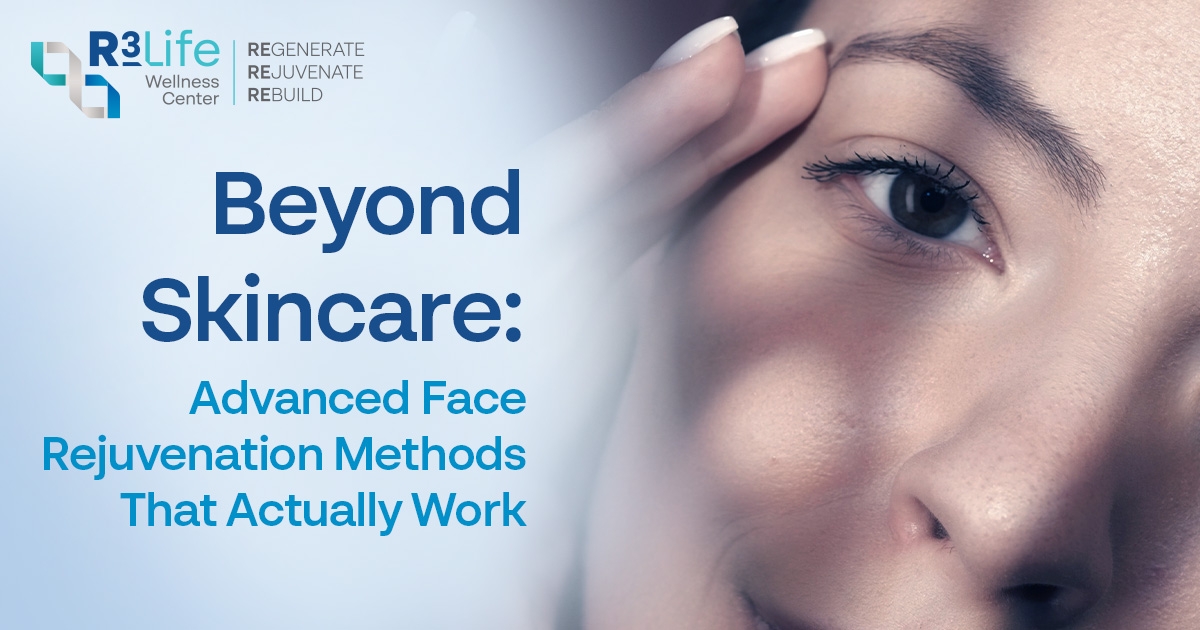Answering 9 Questions You Should Know About, Before Getting Stem Cell Injections

What are stem cells? Stem cells are origin cells with a unique ability to divide and develop into various types of cells in the body. They are used to repair, regenerate, and replace deteriorated or damaged cells, making them a key approach in stem cells for treatment. Particularly in anti-aging medicine and in helping to alleviate or improve existing health conditions.
For those interested in stem cells injection, you may have heard that the process is quite complex — from cell collection, cell culture, to applying them to the body. Today, we've gathered a Q&A of frequently asked questions about stem cells injection that you should know to clear any doubts if you're considering this method as an anti-aging solution or a future treatment option!
Q&A: 9 Frequently Asked Questions You Should Know Before Getting a Stem Cell Injection!
Get answers to all your questions about stem cell injection, including essential information and important advice you shouldn't miss. Learn about the do's and don'ts after the injection, as well as potential side effects to watch out for. What should you know? Let's check the list together
1. Where do stem cells come from?
Answer: Stem Cell Therapy primarily uses Mesenchymal Stem Cells (MSCs) derived from two main sources: Cord Tissue and Amnion. These sources have the remarkable ability to develop into various cell types efficiently without needing blood-type compatibility.
To maintain cell quality and achieve the best results, it's essential to choose a partner lab that meets high standards, such as Clean Room Class 100 or certifications like ISO 15189, ISO 15190, ISO 27001, and ISO 9001 for stem cell management. Additionally, certifications from NIA and ISBT and proper cell culture standards are crucial.
The cell culture process begins immediately after obtaining fresh cells from the delivery room using Xeno-free Culture Medium — a medium free from animal components and compliant with GMP manufacturing standards. During storage, cells should be kept under optimal conditions at -196°C in liquid nitrogen to preserve their viability and quality, ensuring they remain ready for effective treatment.
2. Who is suitable for stem cell injections?
Answer: Stem cells for treatment are particularly beneficial for two main groups: individuals seeking relief from diseases and those looking for aesthetic rejuvenation and anti-aging effects.
For disease treatment, stem cells help regenerate damaged or deteriorated tissues, making them suitable for patients with osteoarthritis, rheumatoid arthritis, diabetes, cardiovascular diseases, and neurological disorders such as Parkinson’s, Alzheimer’s, stroke, and paralysis. Additionally, stem cells can support individuals with kidney failure, weakened immune systems, or those recovering from COVID-19.
In terms of aesthetic and anti-aging purposes, stem cell injection contribute to anti-aging by reducing wrinkles, tightening the skin, and strengthening skin cells from within. By stimulating collagen and elastin production, these treatments promote a more youthful, radiant, and revitalized appearance.
3. At what age can you get stem cell injections?
Answer: Stem cell injections are generally recommended for individuals aged 35 and above, as the body begins to deteriorate, and cells start to weaken due to aging and lifestyle factors. These injections utilize stem cells for treatment to help restore and rejuvenate weakened or damaged cells.
Therefore, it is advisable to consult with an anti-aging medical specialist to develop a personalized treatment plan that suits each individual's specific needs.
4. How long do the results of stem cell injections last?
Answer: The duration of results from stem cell injections depends on several factors, such as the purpose of the treatment, the quality of the stem cells used, the recipient's health, and post-treatment care.
For medical conditions like early-stage osteoarthritis, injecting 5-10 million stem cells per side may be sufficient. If no further injury occurs, the results can last for several years. However, in cases of severe symptoms or heavy joint use, additional stem cell injections may be required to maintain the effectiveness of the treatment.
For body and skin rejuvenation, stem cells for treatment can help reduce wrinkles, promote youthful skin, and strengthen the body. To maintain continuous results, it is recommended to undergo the treatment once or twice a year or every other year, depending on individual health conditions.
Factors that influence the longevity of results include the quality of the stem cells, where the stem cells come from, the choice of a certified clinic or medical institution, and each individual's post-treatment self-care.
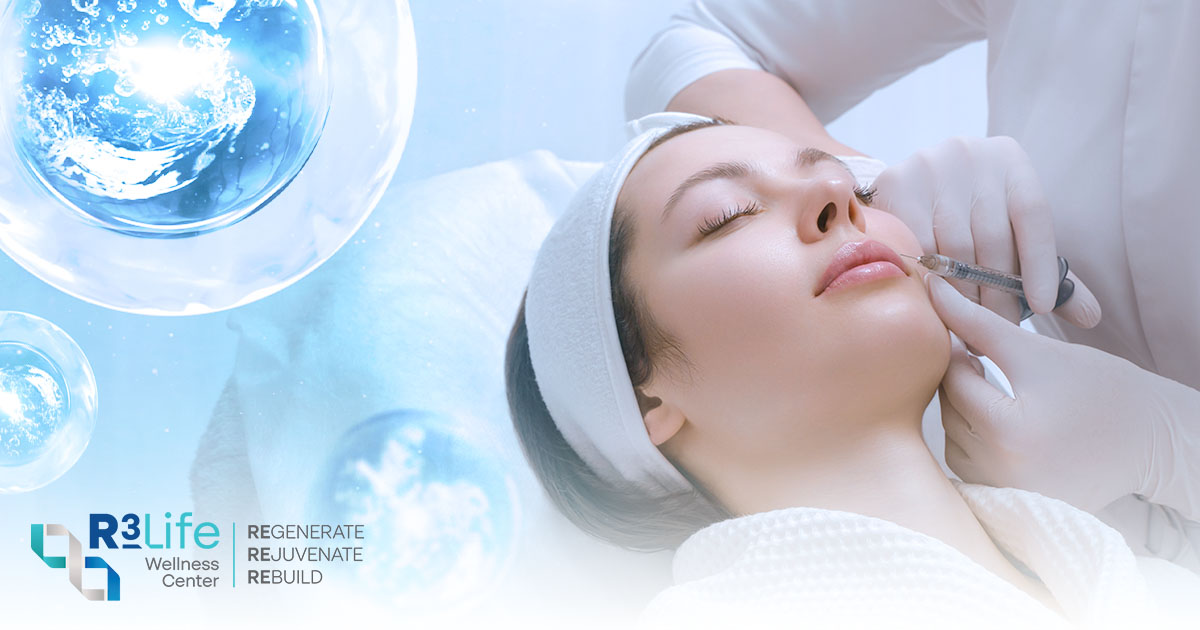
5. Can you use someone else's stem cells for injections?
Answer: Mesenchymal Stem Cells (MSCs) are a type of stem cells that do not require blood-type compatibility and can develop into various cell types, making them ideal for stem cell injections. These cells are widely used in stem cell treatments, particularly effective in regenerating the liver, reducing fibrosis, stimulating new cell growth, and strengthening the body.
To ensure effectiveness and safety, it is recommended to use MSCs that have been carefully selected and quality-checked according to GMP standards and certified by ISO 15189, ISO 15190, ISO 27001, and ISO 9001, as well as approved by NIA and ISBT. Additionally, processing should be conducted in a Clean Room Class 100 for the highest level of safety.
6. How many stem cell injections are needed to see results?
Answer: The number of stem cell injections needed depends on individual needs and health conditions. Stem cells for treatment can produce noticeable results even after the first session in some cases.
For pain management, such as treating osteoarthritis, stem cells injection may start providing pain relief within 5 days after treatment, with gradual improvement over 1-2 months. The affected joint may feel stronger as it adapts to daily activities. However, results can vary from person to person.
If stem cell injections is used for facial rejuvenation, initial results often appear within 1-2 weeks, leading to brighter, more radiant skin, and a reduction in wrinkles, melasma, freckles, and dark spots. Skin cells generally become stronger, and for those without severe skin issues, a single injection may be sufficient to achieve satisfactory results. However, this varies by individual.
It is recommended to consult a doctor 6-8 months after treatment to assess your condition and determine whether additional injections are necessary. This should align with each person's goals and a tailored treatment plan.
7. Where can stem cell injections be administered?
Answer: Stem cell injections can be administered in various areas of the body, with different purposes for each location. It is essential to be under the care of a specialized anti-aging doctor who is knowledgeable and experienced to ensure the highest safety.
Face: Helps reduce wrinkles, tighten pores, lighten dark circles, and rejuvenate the skin, giving it a youthful appearance.
Scalp: Stimulates hair regrowth and reduces hair loss and thinning.
Intravenous injections: This method helps regenerate cells throughout the body, balancing and promoting overall health from within. This procedure must be performed under the supervision of a specialized doctor.
Direct muscle injection: Commonly done around the knee, thigh, or hip to repair and regenerate muscle tissue and joints. It is a safe procedure that does not require anesthesia and is suitable for small quantities of stem cells for treatment.
Knee joint injection: A widely used method for regenerating cartilage for individuals with osteoarthritis, making it a highly popular stem cells for treatment.
8. Are there any side effects or symptoms after stem cell injections?
Answer: In general, stem cell injections are very safe. However, in some cases, mild side effects may occur depending on the method of injection and the area being treated.
- Intravenous (IV) stem cell injection: There may be a mild fever afterward as the body adjusts and the cell regeneration process begins.
- Facial stem cell injections: Some minor bruising may occur at certain points, similar to what happens with fillers or typical skin treatments. This usually resolves within a few days.
- Stem cells for treatment in joints or muscle (knee, shoulder, etc.): There are typically no severe side effects. Mild pain or swelling may occur at the injection site, but this generally subsides within a short period.
These reactions can vary by individual. Before undergoing a stem cells injection, it is crucial for the patient to consult their doctor in detail to understand the potential effects and make an informed decision.
9. How should I take care of myself before and after getting a stem cell injection?
- How should I prepare before the injection?
Answer: Before receiving a stem cell injection, it is essential to consult with a doctor, as everyone's needs and and physical conditions vary. The doctor will create a personalized treatment plan and provide tailored advice. Additionally, getting enough rest, ideally 8-12 hours of sleep, helps ensure the body is in its best condition for rejuvenation. If you are receiving stem cells for treatment via an IV drip, it is recommended to avoid fried and fatty foods for at least 2-3 days and drink plenty of water. This helps your body absorb and regenerate cells effectively. Those considering the procedure should thoroughly research the details of stem cell injections, including possible side effects. Understanding these aspects is essential to make an informed decision about using stem cells for treatment.
- How should I care for myself and what should I avoid after the injection?
Answer: Since stem cells injection treatment vary depending on individual needs, it is important to have a detailed discussion with the treating doctor.
Generally, after the procedure, it is recommended to rest for 1 day and drink plenty of water. If the stem cells injection is via an IV drip, avoid heavy exercise or outdoor sports for at least 1-2 days.
For the knee injections, it is advisable to avoid strenuous physical activity, walking long distances, or carrying heavy items for 1-2 days to prevent pressure that could interfere with the cell regeneration process.
If the injection is for the facial or neck, avoid scrubbing the skin, exfoliating, or undergoing manual procedures such as laser treatments for at least a week. Additionally, avoid exposure to direct sunlight to reduce the risk of irritation and help maintain the results longer.
Unlock the Healing Power of Stem Cells to Slow Aging and Enhance Your Health
As we age, our bodies undergo inevitable changes. Cells deteriorate, and cell division slows down, leading to aging and various health problems. However, with the innovation of stem cell therapy, you can rejuvenate your health and slow down the body’s degeneration once again.
Checklist for Ensuring Safe Stem Cell Therapy
1. Choose a Lab with International Standards and Clear Quality Certifications
Stem cells should be stored and cultured in a laboratory that has internationally recognized certifications, such as Clean Room Class 100, or ISO 15189, ISO 15190, ISO 27001, ISO 9001 certifications for stem cell management. Additionally, certifications from NIA and ISBT and a standard for cell culture from the Association for the Advancement of Blood & Biotherapies (AABB). These qualifications are crucial for ensuring the safety and quality of stem cells injection procedures.
2. Use of Modern and Safe Cell Culturing Techniques
The use of Xeno-free cell culture media, which contains no animal-derived products, ensures the highest safety for human treatment and purity of the cells. Additionally, the use of GMP-compliant manufacturing-grade Cell culture media guarantees the consistent quality required for stem cells injection procedures. For preservation, stem cells should be storage in liquid nitrogen at -198°C, and properly thawed at 37°C to prepare the cells for use.
3. Youthful and Highly Effective Stem Cells
MSCs (Mesenchymal Stem Cells) should be cultured from fresh cells at Passage 0 to ensure high-quality, genuine stem cells. The cells should be used within Passage 1-3, the stage when they are most youthful and have the highest efficiency in body regeneration. The appearance of cultured cells should exhibit the characteristic shape of human MSCs, with pointed ends (similar to a spindle shape when observed during cell stretching).
4. Testing for Safety and Effectiveness
Each batch intended for stem cells injection must undergo Sterility Testing to ensure it is free from bacteria, viruses, fungi, mycoplasma, and toxins. Immunophenotyping should be conducted to check cell markers like CD73, CD90, and CD105, confirming that the cells are true mesenchymal stem cells (MSCs). Additionally, the Cell viability should exceed 90% after washing the cells to ensure safety and reduce the risk of damage.
5. Skilled Medical Team Specializing in Stem Cell Therapy
Doctors should be certified by the American Board of Anti-Aging and Regenerative Medicine (ABAARM) and recognized by the Stem Cell Therapy Association of Thailand to design the most effective treatment plan tailored to your needs. The medical team should be experienced in stem cell treatments to ensure you receive the best care possible throughout your health rejuvenation journey.

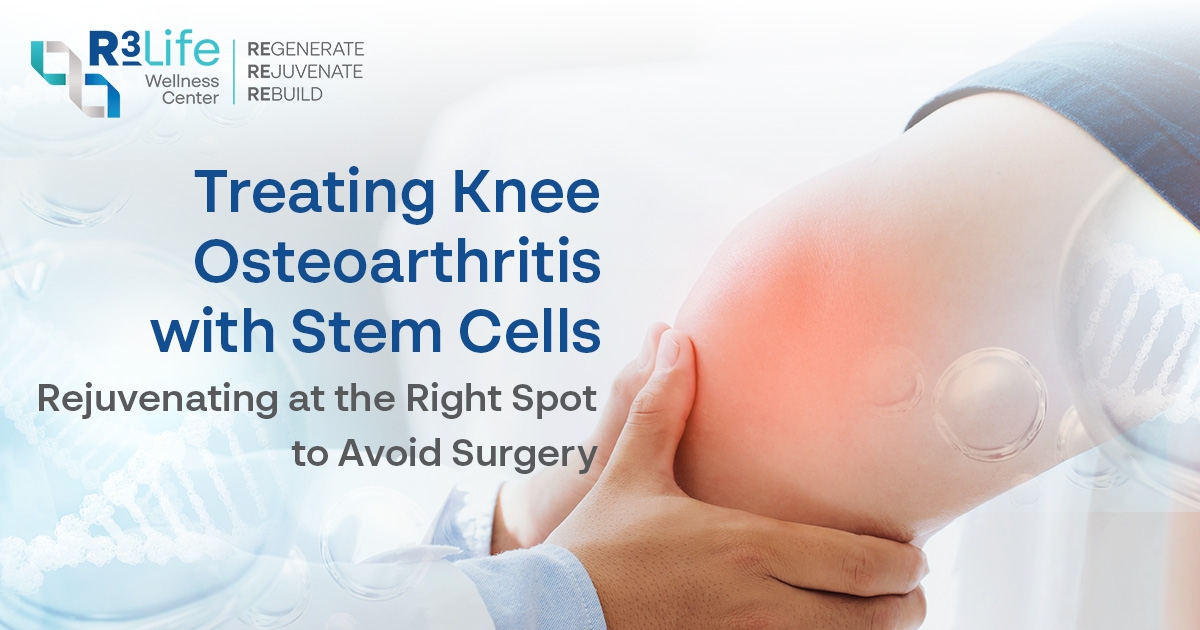
 Stem Cells vs Surgery for Knee Pain: Complete Comparison Guide
Stem Cells vs Surgery for Knee Pain: Complete Comparison Guide